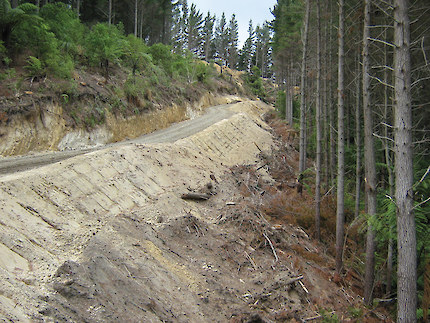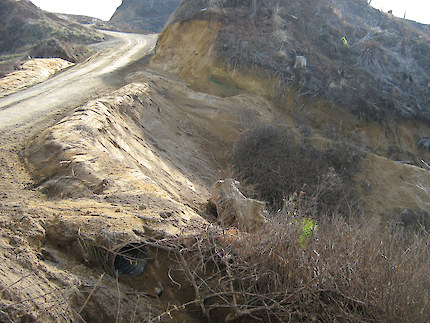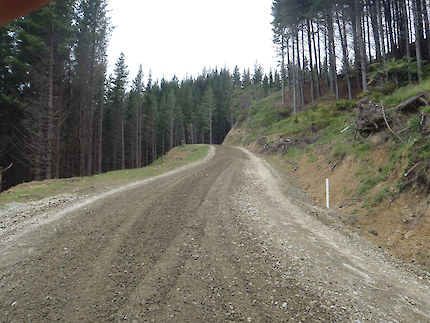To build a well-constructed road you need to get the basics right:
- Always think about managing water, water, water
- Make cuts and construct fills so they are stable
- Compact and shape the road so it is strong
- Make the road’s width, grade and corners suitable for the traffic and terrain.

- Good roadway salvage width
- Topsoil, slash and other substandard materials have not been used
- Stable cut and fill slopes
- Good construction technique. For example, benched, and fill compacted in layers

- Well-constructed water control
- Compacted berms direct water to either cut-outs or sediment traps
- Grass seed has been applied to stabilise fills and reduce erosion

- Adequate road width and grade. Wider is not always better. For example, in unstable areas
- Road has been metalled with good aggregate, at right depth and width
- Good crossfall
- Well-compacted road surface
- Culvert clearly marked, with water directed away from the fill
- Stable batter slopes
- Ditch is below subgrade

- The potential sediment sources have not been properly managed:
- Little water control. The fill erosion may be due to a lack of culverts, berms or ditches
- The fill is not contained on a bench, and has spilt up to 40 m down the slope
- The fill has not been grassed to reduce erosion. It has no vegetation after several years